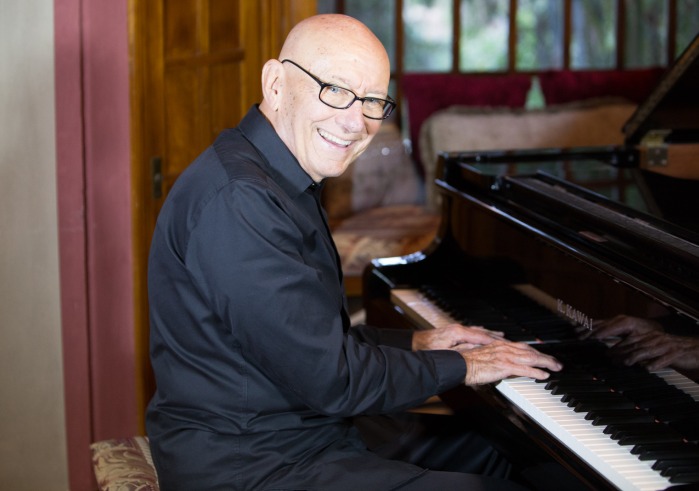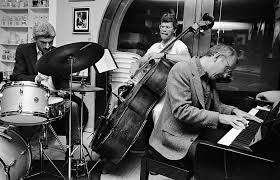
Michael (Mike) Wofford — A Life at the Keyboard
Michael Wofford — usually billed as Mike Wofford — carved a singular path through American jazz: a pianist whose acute musical sensitivity made him a musician’s musician, and whose work as an accompanist placed him in the rare company of singers and instrumentalists who demanded both technical command and empathetic restraint. Born February 28, 1938, in San Antonio and raised in Southern California, Wofford’s career spanned more than six decades. He died September 19, 2025, at the age of 87.
Early Life and Musical Formation
Mike Wofford grew up in San Diego, California, a city with a modest but vibrant jazz community during the 1940s and 1950s. Unlike many East Coast players who came up through the dense networks of New York jam sessions, Wofford’s musical upbringing unfolded in a quieter but no less formative environment. His early exposure to jazz came through radio, records, and live performances in small San Diego clubs.
By his teenage years, he was already deeply engaged with the piano. His influences ranged from the lyrical sophistication of Bill Evans to the rhythmic energy of Bud Powell, but he also absorbed the subtle phrasing and harmonic daring of pianists like Horace Silver and Wynton Kelly. Growing up on the West Coast allowed him to engage with both cool jazz — the more restrained, chamber-like approach associated with musicians such as Lennie Tristano and Paul Desmond — and the hard bop energy arriving from the East.
In 1959, his professional trajectory accelerated when he joined Howard Rumsey’s Lighthouse All-Stars. The Lighthouse Café in Hermosa Beach was legendary as a proving ground for rising talent, and playing there put Wofford in direct contact with many of the musicians who would shape his career. His time with the group was an education in ensemble discipline, arranging, and the delicate balance between written material and improvisation.
Rise in the 1960s: First Records and Studio Life
The 1960s were decisive for Mike Wofford. He quickly built a reputation as a pianist who could combine technical brilliance with an understated elegance. In 1966, producer Albert Marx signed him to Epic Records, and Wofford released Strawberry Wine. This debut revealed his compositional imagination and his refined pianism. Critics noted its balance of lyricism and rhythmic bite, and the record helped establish him as one of the most promising pianists on the West Coast.
A second album, Summer Night, followed in 1968, confirming his ability to lead a trio with authority and nuance. These albums were not chart-toppers in the commercial sense, but within the jazz community they marked Wofford as a thoughtful artist. He was praised for his harmonic inventiveness — chord voicings that suggested entire orchestrations — and his restraint. Unlike many pianists who rushed to showcase their technique, Wofford was content to let silence and space carry as much weight as a cascade of notes.

.
At the same time, Mike Wofford was increasingly active as a studio musician. Los Angeles was a hub for film and television scoring, and his adaptability made him a natural choice for arrangers like Oliver Nelson and Quincy Jones. In these settings he learned to move seamlessly between jazz, pop, and orchestral idioms. This work, though less public, sharpened his reading skills, his stylistic breadth, and his ability to collaborate under pressure.
A Pianist for Singers: Sarah Vaughan and Ella Fitzgerald
Mike Wofford’s career-defining role was as an accompanist for singers. In 1979 he joined Sarah Vaughan as her pianist and musical director. Vaughan was notoriously demanding of her accompanists; she needed someone who could follow her elastic phrasing, complex harmonic modulations, and sudden dynamic shifts. Wofford excelled in this role, bringing both sensitivity and authority to the bandstand.
A decade later, he assumed an even more prominent position as pianist and music director for Ella Fitzgerald from 1989 until 1994. By this stage, Fitzgerald’s voice was aging, but she remained an unmatched interpreter of the American songbook. Wofford supported her with extraordinary finesse, crafting arrangements that gave her room to explore and using subtle harmonic shading to enhance her storytelling.
Accompanying singers of this caliber is an art form in itself. The pianist must anticipate a singer’s intentions — stretching a phrase, delaying a cadence, or shifting dynamics in real time. Wofford had an uncanny ability to “breathe” with the vocalist, creating the sense that singer and pianist were engaged in a single, seamless conversation. This capacity for collaboration distinguished him among his peers.
Collaborations and the Company He Kept
Throughout his career, Mike Wofford performed with some of the most revered figures in jazz. His collaborations included work with trumpeter and arranger Shorty Rogers, alto saxophonist Bud Shank, guitarist Joe Pass, drummer Shelly Manne, guitarist Kenny Burrell, and tenor saxophonist Zoot Sims. Each collaboration highlighted a different facet of his artistry.
With Rogers, Wofford demonstrated his skill at handling complex arrangements that blended big-band textures with small-group interplay. With Shank and Sims, he showed his capacity for fluid swing and melodic interplay. Playing alongside Joe Pass or Kenny Burrell, he demonstrated the art of comping behind guitarists — supporting without overwhelming, framing their lines with harmonic color.
These associations reinforced his reputation as a flexible, generous musician. Wofford was rarely the flashiest soloist on the bandstand, but his colleagues valued his reliability and his capacity to elevate the performance of those around him.
Artistry and Style: The Sound of Mike Wofford
To understand Mike Wofford’s artistry, one must listen carefully. His style was not one of virtuosic display, but of subtle refinement. His touch on the piano was light but firm, allowing him to articulate lines with clarity. He was known for his sophisticated harmonic vocabulary, often using clusters, inner-voice movement, and unexpected substitutions to freshen familiar material.
Rhythmically, he had a gift for elasticity. He could play behind the beat to create a sense of tension, or lean ahead to propel a soloist forward. When accompanying singers, he often used rubato introductions — brief, improvisatory meditations on the song’s harmony that set the stage for the vocalist’s entrance.
As a soloist, he combined lyricism with structural clarity. His improvisations rarely meandered; they unfolded logically, with themes developed and resolved. There was often a conversational quality in his phrasing, as though he were speaking through the keyboard rather than performing tricks upon it.
Recordings and Lasting Documents
Though Mike Wofford’s fame rested largely on his work with singers, his discography as a leader is significant. Strawberry Wine (1966) and Summer Night (1968) remain landmarks of West Coast trio jazz. In later decades he recorded thematic projects, such as Plays Jerome Kern, which showcased his affinity for the Great American Songbook.
His long musical partnership with flutist Holly Hofmann yielded several important recordings. Their duo and quartet performances highlighted the lyrical dialogue between piano and flute, and albums such as Live at Athenaeum Jazz captured the intimacy of their collaboration. These recordings reveal another side of Wofford: playful, exploratory, and deeply attuned to chamber-like interplay.
For listeners who wish to understand his approach to jazz piano, these albums provide invaluable documents. They show a musician equally comfortable in trio settings, vocal accompaniment, and collaborative chamber ensembles.
Teaching, Interviews, and Public Voice
Beyond performance, Mike Wofford contributed to jazz education and discourse. He gave masterclasses and interviews in which he articulated his philosophy of accompaniment and improvisation. A notable example was his participation in the NAMM Oral History project, where he reflected on his life in music.
In these conversations, Wofford emphasized that accompanying was not about subordination but partnership. He argued that the accompanist’s job was to listen deeply, to anticipate, and to inspire. This philosophy made him a mentor figure, not only to students but also to younger professionals who sought to understand the subtler dimensions of jazz performance.
Personal Life and Partnership with Holly Hofmann
A defining feature of Mike Wofford’s later career was his partnership with flutist Holly Hofmann, whom he married. Their musical relationship mirrored their personal one: supportive, balanced, and filled with mutual respect. Together they performed at festivals, clubs, and concert halls, often presenting programs that blended jazz standards with original compositions.
The duo became a fixture in San Diego’s jazz scene, and their work helped sustain the city’s reputation as a hub for creative music. Wofford’s loyalty to San Diego was notable; though he traveled extensively, he always returned to nurture the local community.
Legacy and the Accompanist’s Art
In considering Mike Wofford’s legacy, one must place him within the tradition of great accompanists in jazz. Pianists like Jimmy Rowles, Tommy Flanagan, and Ellis Larkins defined the role of supporting singers with intelligence and grace. Wofford belongs in this lineage, yet he brought his own sensibility: a West Coast refinement, a studio musician’s adaptability, and a personal modesty that masked profound artistry.
.
For younger pianists, his example is instructive. He demonstrated that jazz mastery does not always mean dominating the spotlight. Instead, it can mean cultivating the skills to support, to inspire, and to make others sound better. This ethos of generosity, combined with technical brilliance, defines his place in jazz history.
Final Years and Passing
Mike Wofford remained musically active well into his eighties, performing in small groups, recording projects, and public interviews. His later performances retained the elegance and refinement that had always characterized his style. On September 19, 2025, he died at the age of 87.
Mike Wofford’s career spanned more than sixty years, during which he moved seamlessly between roles: leader, sideman, accompanist, teacher. His artistry was defined not by spectacle but by attentiveness. In an art form that often prizes virtuosity and individuality, Wofford showed that the deepest artistry lies in listening.
For listeners who first encounter him through his work with Sarah Vaughan or Ella Fitzgerald, the discovery often unfolds gradually. At first one hears the singer; then, upon closer listening, the piano voice emerges — subtle, supportive, guiding. For musicians, his legacy is even clearer: Wofford modeled how to live a jazz life built on generosity, refinement, and deep musical intelligence.
His recordings, from Strawberry Wine to his duo work with Hofmann, remain as lasting documents of a musician who dedicated his life to making others sound their best. In this way, Mike Wofford not only contributed to jazz history but also embodied one of its highest ideals: that music is a conversation, and the truest artistry lies in listening as much as in playing.
Selected Discography (Highlights)
- Strawberry Wine (Epic, 1966)
- Summer Night (1968)
- Mike Wofford Trio Plays Jerome Kern (1980s–1990s)
- Live at Athenaeum Jazz (with Holly Hofmann)
Check out Mike Wofford on Amazon by clicking here.
If you found this interesting please share it with your friends and family, and check out some of our other articles on Musicians who Died in 2025.
.

